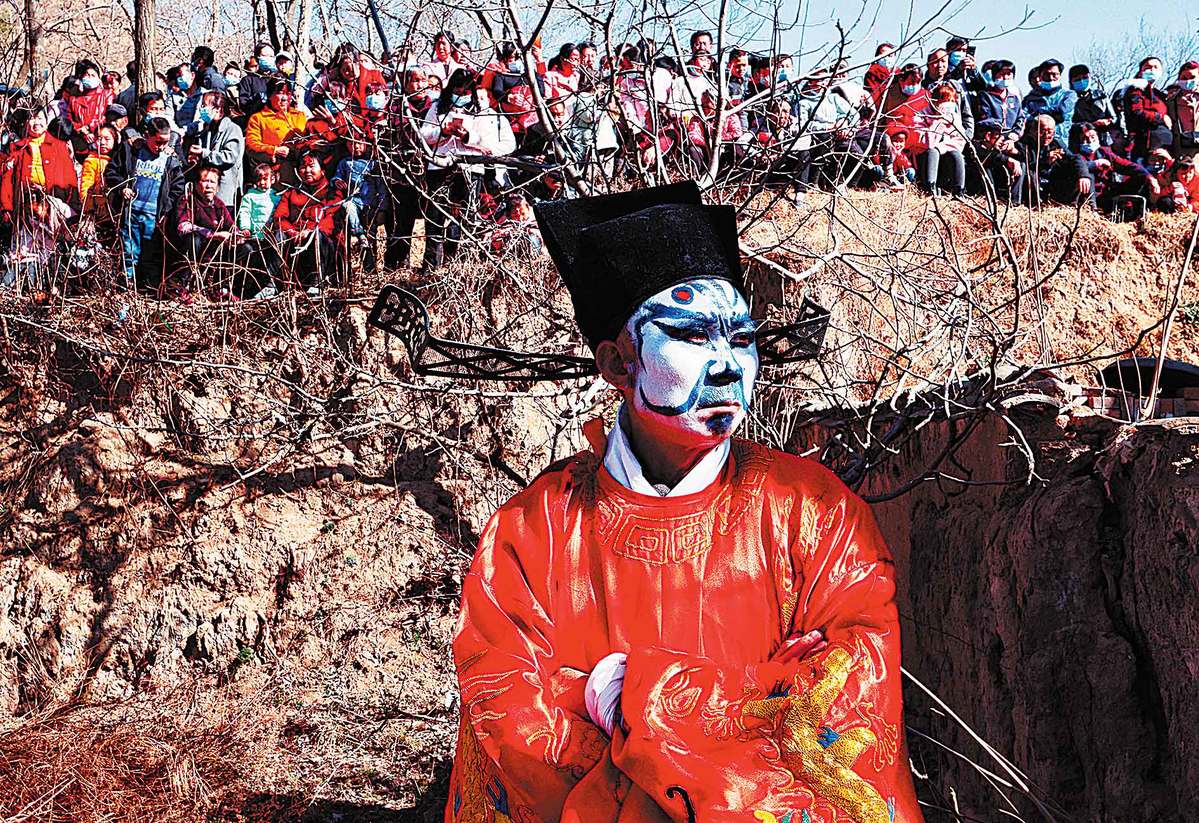Traditional parades pass test of time
 A performer wearing facial makeup waits during a shehuo parade in Longxian, Shaanxi province, on Feb 20, last year. KONG RUOCHEN/FOR CHINA DAILY
A performer wearing facial makeup waits during a shehuo parade in Longxian, Shaanxi province, on Feb 20, last year. KONG RUOCHEN/FOR CHINA DAILY
XI'AN-Dipping a brush into the paint and delineating the lines cautiously with his wrinkled fingers, Wang Qiming put traditional makeup on the faces of young performers before dawn, making final preparations for the shehuo parade.
At sunrise, gongs and drums sounded on a quiet country road in the village of Wangmazui, in Baoji, Shaanxi province.
The shehuo parade, a time-honored performance enjoying widespread popularity in rural areas across China, traces its origins back about 2,000 years to sacrificial activities to pray for a good harvest.
Later on, as dancing and singing became part of the parade, it evolved into a folk custom staged during the Spring Festival and Lantern Festival to remove bad luck and bring a fresh start in the new year.
The shehuo folk performance in Baoji made it onto the list of China's national intangible cultural heritage in 2006.
Wangmazui is in Longxian county, previously known as Long Zhou, which is well-known for shehuo parades featuring authentic and inclusive performances and simple yet exquisite facial makeup.
The county was named the hometown of shehuo performances by the Chinese Folk Literature and Art Association in 2013.
More than 100 shehuo festivities are staged in Longxian every year, each involving dozens or hundreds of villagers.
Revelers usually perform on horses or pickup trucks, showing scenes from classic novels like Romance of the Three Kingdoms and Investiture of the Gods, with different performance genres including stilt dances and land boats.
Wang, 65, has clear memories of the annual performances when he was a child.
"My family has been engaged in shehuo performances for generations," he said. "I started to watch the show in my childhood, and now I join them by making face-painting.
"My son can sing Long Zhou folk tunes, and my grandsons are learning drums and cymbals."
Twenty-year-old Ma Liang returned home to Longxian before Lunar New Year.
Knowing that shehuo performances would come to his village, he took the initiative to join the troupe.
"Every year, when the locals stage shehuo performances, the villages burst into a carnival of drums and gongs," he said.
"I grew interested in it when I was young."
Schools in the county offer after-class courses related to shehuo. Students in the third and fourth grades at Wangmazui's primary school learned how to play drums and gongs twice a week, and some of them performed during this year's Spring Festival.
Several shehuo companies have been set up in the county and perform shows in villages, promoting the development of the local folk art, said Su Liming, head of the local cultural center.
In Baoji's Dayuan village, delicate props and glamorous dresses are showcased in a shehuo museum.
Historical records show that local folk associations began to stage shehuo festivities at the end of the Qing Dynasty (1644-1911).
"The shehuo parade is the cultural root of Longxian, and generations of locals will keep passing it on," Su said.


